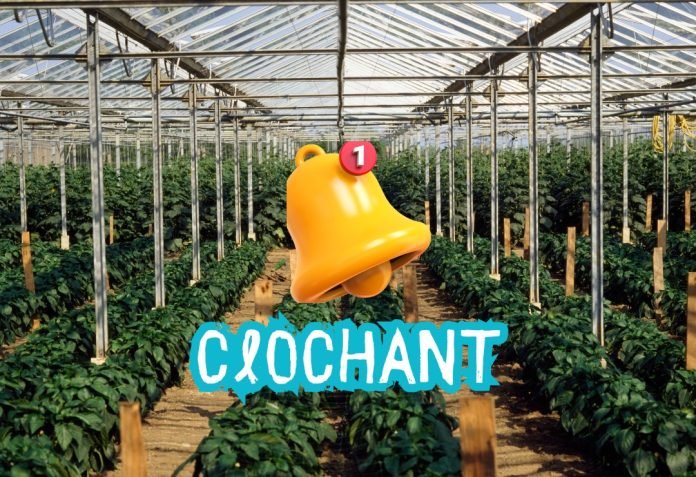Clochant is a term that you may not be familiar with, but it is a concept that has been around for centuries. In simple terms, clochant refers to the sound of a bell or bells. Particularly, those in a church or other religious setting. The word itself comes from the French word “cloche,” which means bell.
The sound of bells has been an important part of many cultures and religions throughout history. In Christianity, the sound of church bells is often associated with calling people to worship and marking important occasions such as weddings and funerals. In some cultures, bells are also believed to have spiritual and healing properties.
While the use of bells in religious settings may be the most well-known example of clochant, the concept can also be applied to other contexts. For example, the sound of a bell can be used to signal the start or end of a sporting event, or to indicate the beginning of a class or lecture. In any case, the sound of a bell has the power to capture our attention and evoke a sense of significance and importance.
What is Clochant?
Table of Contents
- 1 What is Clochant?
- 2 Cultural Significance
- 3 Linguistic Etymology
- 4 Modern Usage
- 5 Clochant Preservation Efforts
- 6 Scientific Research
- 7 Frequently Asked Questions
- 7.1 What is the definition of ‘clochant’?
- 7.2 How can ‘clochant’ be used in a sentence?
- 7.3 Are there any notable historical uses of the term ‘clochant’?
- 7.4 What are some synonyms for ‘clochant’ in English?
- 7.5 Can ‘clochant’ be considered a term in a specific field or discipline?
- 7.6 What is the etymology of ‘clochant’?
The term “clochant” seems to have multiple interpretations and uses, depending on the context. In some sources, it is associated with the French word “cloche,” which means “bell.” The term could refer to the sound of a bell ringing or a bell-shaped object.
In historical contexts, it might be connected to a fabric known as “cloque” that originated in 17th-century France. However, without a specific context, it’s challenging to provide a definitive explanation for “clochant.”
If you’re looking for information about a specific use of the term “clochant,” please provide more context so I can give you a more accurate answer.
Geographical Distribution
Clochant is a plant species that is widely distributed across different regions of the world. The plant is native to Europe, Asia, and North Africa, but it has also been introduced to other parts of the world, including North America and Australia.
In Europe, clochant is commonly found in countries such as France, Spain, Italy, and Greece. It is also prevalent in parts of Eastern Europe, including Romania, Bulgaria, and Ukraine. In Asia, the plant is found in countries such as Turkey, Iran, and Iraq. In North Africa, it is common in countries such as Morocco and Algeria.
Clochant has also been introduced to other parts of the world, where it has become naturalized. In North America, for example, the plant is found in parts of the United States and Canada. In Australia, it is found in the eastern states.
The plant is adaptable to a wide range of climatic conditions and can grow in different types of soil. However, it prefers well-drained soils and can grow in areas with low rainfall. It is commonly found in grasslands, open woodlands, and disturbed areas such as roadsides and abandoned fields.
Cultural Significance
Clochant, a traditional Irish bell, holds significant cultural importance in Irish history and folklore. The bell has been used in various ceremonies, including weddings, funerals, and important religious events.
Literary References
Clochant has been mentioned in several Irish literary works. In the 6th century, Saint Patrick used a clochant to call people to worship. In the 12th century, the Annals of Ulster mentioned a clochant being rung at the death of the High King of Ireland. The 9th-century poem “Pangur Bán” also mentions a clochant, describing it as a “sweet-voiced bell.”
Symbolism in Art
Clochant has been depicted in various forms of Irish art, including paintings and sculptures. The bell is often depicted alongside other traditional Irish symbols, such as the harp and the shamrock. The bell’s symbolism is associated with the idea of calling people to gather, whether it be for worship or celebration.
Linguistic Etymology
Clochant, also known as “bell stone,” is a unique stone that has been used for centuries in Ireland for various purposes. The name “clochant” is derived from the Irish language, with “cloch” meaning “stone” and “ánta” meaning “to ring.” This linguistic etymology provides insight into the stone’s primary use as a bell or gong.
The word “clochant” has also been associated with the Irish word “clochán,” meaning “a small stone house.” This connection may stem from the fact that clochant stones were often used as building materials for small structures such as beehive huts.
In addition to its use as a bell or building material, clochant has also been used for its perceived healing properties. The stone was believed to have the ability to cure ailments such as headaches and rheumatism when held or placed on the affected area.
Modern Usage
Clochant, a traditional musical instrument, has been used in various ways in modern times. Here are some examples of how clochant has been used in popular media and commercial applications:
In Popular Media
Clochant has been featured in several popular movies and TV shows. The instrument’s unique sound and appearance make it a popular choice for filmmakers and composers. For example, in the movie “Inception,” clochant was used to create a dreamlike atmosphere in several scenes. Clochant has also been used in TV shows like “Game of Thrones” and “Westworld” to add an eerie or mystical quality to the soundtrack.
Commercial Applications
Clochant has also found its way into the commercial world. Many companies use the instrument in their advertising campaigns to create a distinctive and memorable sound. For example, the car company Lexus used clochant in a recent commercial to emphasize the precision and attention to detail of their vehicles. In addition, some musicians have incorporated clochant into their music, creating a unique and captivating sound.
Clochant Preservation Efforts
Preserving the historic and cultural heritage of Clochant has been a priority for the local community and government. Here are some of the efforts that have been made to preserve Clochant’s unique character:
1. Historic Landmarks Preservation
The Clochant Historic Preservation Commission has designated several buildings and sites as historic landmarks. These landmarks are protected by law and cannot be altered or demolished without permission. The commission also provides guidance and resources to property owners who wish to maintain or restore their historic buildings.
2. Community Education
The local government and community organizations have made efforts to educate residents and visitors about the importance of preserving Clochant’s historic and cultural heritage. This includes offering tours of historic sites, hosting events that celebrate local traditions, and providing resources for historic preservation.
3. Restoration and Maintenance
Many property owners in Clochant have taken it upon themselves to restore and maintain their historic buildings. This includes repairing or replacing damaged or deteriorating features, such as windows, roofs, and facades. The local government also provides grants and other resources to property owners who wish to restore their historic buildings.
4. Zoning and Planning Regulations
The local government has implemented zoning and planning regulations that aim to preserve the historic character of Clochant. These regulations limit the types of new construction and development that are allowed in certain areas, and require that new buildings be designed to fit in with the existing architecture and character of the neighborhood.
Scientific Research
Biological Studies
Clochant has been the subject of numerous biological studies due to its potential medicinal properties. One study found that clochant extract contains compounds that have anti-inflammatory properties and may be useful in treating conditions such as arthritis. Another study found that clochant extract may have anti-cancer properties, although further research is needed to confirm these findings.
Environmental Impact
Research has also been conducted on the environmental impact of clochant cultivation. One study found that clochant cultivation may have a positive impact on soil health, as the plant’s deep roots can help to improve soil structure and increase nutrient availability. However, other studies have raised concerns about the potential for clochant cultivation to contribute to soil erosion and water pollution, particularly in areas with steep slopes or poor soil quality. Also read about Geekzilla Tio Geek, Snapchat Planets and Homeworkify.
If you like this article then visit Doyen Marketers again.
Frequently Asked Questions
What is the definition of ‘clochant’?
‘Clochant’ is a French term that refers to a bell tower or steeple. It is typically used to describe the tall structure that houses one or more bells in a church or other religious building.
How can ‘clochant’ be used in a sentence?
Here is an example sentence: “The clochant of the cathedral could be heard ringing throughout the town.” In this sentence, ‘clochant’ is used to describe the bell tower of the cathedral.
Are there any notable historical uses of the term ‘clochant’?
‘Clochant’ has been used in French literature and history to describe the bell towers of many famous churches and cathedrals. One notable example is the clochant of Notre-Dame de Paris, which was famously damaged in a fire in 2019.
What are some synonyms for ‘clochant’ in English?
Some English synonyms for ‘clochant’ include bell tower, steeple, and belfry.
Can ‘clochant’ be considered a term in a specific field or discipline?
‘Clochant’ is primarily used in the context of architecture and religious studies. It is often used to describe the bell towers of churches and other religious buildings.
What is the etymology of ‘clochant’?
The word ‘clochant’ comes from the Old French word ‘cloche’, which means ‘bell’. It is derived from the Latin word ‘clocca’, which also means ‘bell’.
















